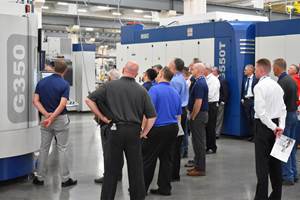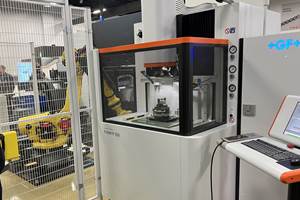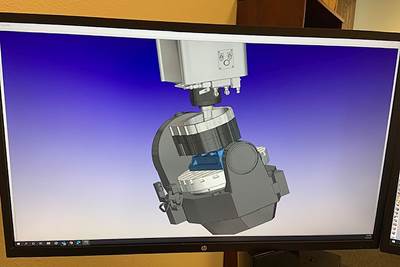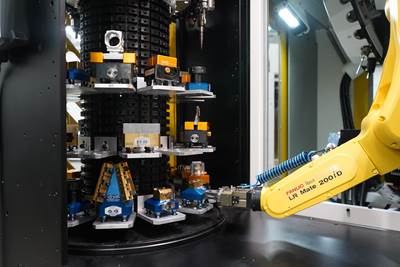New Machining Centers Improve Moldmaking Workflow
Westminster Tool has shifted the workflow in its moldmaking department to incorporate high-speed five-axis and, as a result, cut lead times and reduce the need for wire EDM.
Share





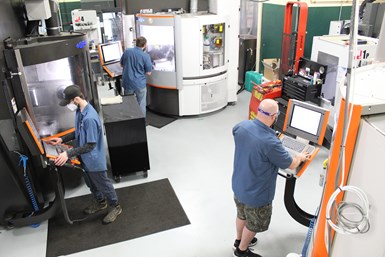
Between its new Mikron mills, automation capacity and centralized hard milling cell, Westminster Tool was able to increase its milling capacity by over 400%. Photo Credit: Westminster Tool
Westminster Tool of Plainfield, Connecticut, has spent the past seven years investing in its workforce, and the result is a pool of talent that has enabled the moldmaker to capitalize on its recent investment in high-speed machining centers. The new equipment has changed the way the company thinks about complex jobs and about how it can meet the increased demand from its mold department, which has seen new activity from the medical device industry. In total, Westminster Tool has added two high-speed three-axis milling machines and one high-speed five-axis milling machine with a pallet pool from Mikron Corp.
More Jobs Require More Spindles
Until recently, Westminster Tool operated a single Mikron HSM 500. Even a 24/7 schedule for the machine could not solve the capacity bottleneck that required the company to turn down jobs. Westminster Tool reports that their decision to invest in additional machining centers was critical to maintaining their well-established training program.
Westminster Tool discovered that by increasing its use of five-axis machines to replace EDM operations, it could reduce its electrode list by 40% for a single job — cutting the job’s lead time by two weeks.
Now that it has added two more high-speed three-axis machines, a Mikron HSM 500 Graphite and a Mikron HSM 500, as well as a high-speed five-axis Mikron HSM 400U LP, the moldmaker can say “yes” to a higher quantity of jobs — including jobs that feature complex geometry. “The goal was originally to increase throughput by reducing our overall lead time,” says Ray Coombs, president of Westminster Tool. The decision to add more machinery was not driven by a single job, but by the desire to increase capacity. The new machinery ultimately increased the shop’s milling capacity by over 400%.
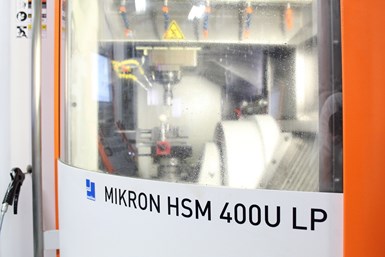
Mikron’s five-axis HSM 400U LP has enabled the shop to both perform more extensive training with its apprentices and take on jobs with more complex, intricate geometries. Photo Credit: Westminster Tool
Reaching New Corners with Five-Axis
When quoting jobs, five-axis has eliminated steps that Westminster Tool had previously performed with EDM — saving a significant amount of time. In one exercise, the shop discovered that by increasing its use of five-axis machines to replace EDM operations, it could reduce its electrode list by 40% for a single job — cutting the job’s lead time by two weeks. “The five-axis capabilities, for example, open us to more intricate types of jobs because we can now hit complex geometries and angles that were difficult to achieve before,” Coombs says.
This process of simplifying the flow of work and focusing on five-axis machining enabled Westminster Tool to redirect its EDM efforts to operations that specifically require EDM. In anticipation of a projected rise in aerospace jobs during 2021, Westminster Tool invested in an additional wire EDM machine, a Sodick ALN 400G.
Increased Training Capacity
An additional perk of adding the new spindles is the ability to increase the hours trainees can use the machines each week. With the new equipment, one apprentice in the hard milling department was able to reach a milestone in three weeks that previously would have taken twice that amount of time. The company also discovered that employees who had already worked through their training were well-equipped to start using the new machining centers right away — many were eager to log time on the new equipment and try out the expanded capabilities.
Related Content
Grob Systems Inc. to Host Tech Event With Industry Partners
The 5-Axis Live technology event will highlight new machining strategies for optimizing the production of complex medical, aerospace and mold/die parts.
Read MoreEDM, Laser Micromachining and More at GF Medical Demo Center
At GF’s Medical Center of Competence, the company shows off EDM and laser features that could make a large impact on medical manufacturing — and elsewhere.
Read MoreForkardt Hardinge Swiss Workholding Provides Reliable, Consistent Performance
The company’s Swiss collets are designed to securely hold parts without marring surfaces, minimizing vibration to ensure smoother machining, enhanced accuracy and extended tool life.
Read MoreVollmer Ultrasonic Cleaning, Deburring System Provides Process Reliability
IMTS 2024: The UltraTec Ultrasonic A25 cleans and deburrs small and delicate components, making it well suited for applications in heavily regulated sectors with challenging demands.
Read MoreRead Next
HyperMill Five-Axis Modules Simplify Complex Part Machining
Open Mind’s HyperMill CAM software includes powerful five-axis milling modules that decrease machining times for complex parts, as happened at NDK Paragon.
Read MoreHow Champions Can Develop a Thriving Workforce
Having a workforce development champion in your shop is more critical now than ever before. Here are five techniques your champion can apply to attract and retain new talent.
Read MorePractical Approaches to Automating Five-Axis Machines
There are many approaches to automation in five-axis machining, and whether a shop uses robots or pallet changers, the benefits are often easier to realize than many believe.
Read More






















